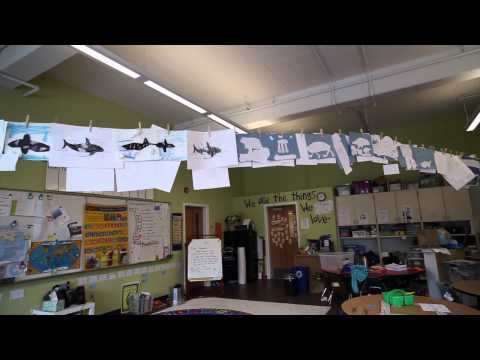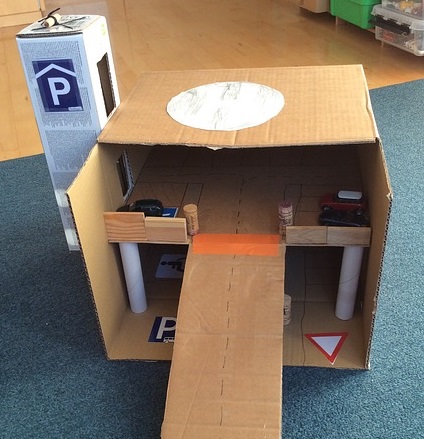Project-based learning through developing the five attitudes of creative people
Project Based Learning is a teaching methodology.
- Project-based learning is a learner-centered pedagogy that involves learners identifying a real-world problem and engaging in hands-on learning to identify a solution.
Watch video lecture (4:52 minutes)
- self-determination
- openness to experience
- risk taking
- a tolerance for ambiguity
- group trust
experts in the real world to initiate a sustained inquiry.
student choice and student voice are critical elements in igniting intrinsic motivation, developing a sense of agency, and placing the learners as captains of their ship.
Project based learning has a focus on deep learning skills such as:
- critical thinking
- collaboration
- communication
- innovation
- creativity
teamwork and positive social relations, and develops higher order cognitive skills so that learners engage in analyzing, synthesizing, justifying, evaluating, and creating. (Bloom’s Taxonomy)
- To summarize, project based learning involves an in-depth investigation of real world topics, manipulation of authentic objects, active learning through projects which occur over weeks or months, and is achieved through questioning experts, making observations, making connections, and demonstrating learning to others.
Universal Design for Learning (UDL) principles. These provide a framework that helps teachers plan learning activities to meet the diverse needs of all students.
include multiple means of representation to allow for connections to be made by all students through varied means of presenting information, multiple means of action and expression so that students can choose topics, ideas, and information, as well as how to organize them, display them, and how they will present them for their chosen audience, and multiple means of engagement Students work with their own interests and on authentic problems.
1. Learners working with a real-world issue that is presented in an authentic manner
2. Exploration of the topic begins with a ‘big question’ and extends over weeks or months
3. Learners connect with experts or ‘knowledgeable others’
4. There is an emphasis on the process of inquiry over the final product
5. There are opportunities for collaborative learning, teamwork, and the development of positive social relationships
6. Learners present their findings to others in insightful ways

granite.pressbooks.pub/teachingdiverselearners/?p=245
Creative Arts Charter School’s Approach to Project Based Learning (5.59 minutes)
youtu.be/1nq4gFp_vAY
advocates of project-based learning:
- Project-based learning gives students a more “integrated” understanding of the concepts and knowledge they learn, while also equipping them with practical skills they can apply throughout their lives. The interdisciplinary nature of project-based learning helps students make connections across different subjects, rather than perceiving, for example, math and science as discrete subjects with little in common.
- Because project-based learning mirrors the real-world situations, students will encounter after they leave school, it can provide stronger and more relevant preparation for college and work. The student not only acquires important knowledge and skills, they also learn how to research complex issues, solve problems, develop plans, manage time, organize their work, collaborate with others, and persevere and overcome challenges, for example.
- Project-based learning reflects the ways in which today’s students learn. It can improve student engagement in school, increase their interest in what is being taught, strengthen their motivation to learn, and make learning experiences more relevant and meaningful.
- Since project-based learning represents a more flexible approach to instruction, it allows teachers to tailor assignments and projects for students with a diverse variety of interests, career aspirations, learning styles, abilities, and personal backgrounds. For related discussions, see differentiation and personalized learning.
- Project-based learning allows teachers and students to address multiple learning standards simultaneously. Rather than only meeting math standards in math classes and science standards in science classes, students can work progressively toward demonstrating proficiency in a variety of standards while working on a single project or series of projects. For a related discussion, see proficiency-based learning.
critics of project-based learning:
- Project-based learning may not ensure that students learn all the required material and standards they are expected to learn in a course, subject area, or grade level. When a variety of subjects are lumped together, it’s more difficult for teachers to monitor and assess what students have learned in specific academic subjects.
- Many teachers will not have the time or specialized training required to use project-based learning effectively. The approach places greater demands on teachers—from course preparation to instructional methods to the evaluation of learning progress—and schools may not have the funding, resources, and capacity they need to adopt a project-based-learning model.
- The projects that students select and design may vary widely in academic rigor and quality. Project-based learning could open the door to watered-down learning expectations and low-quality coursework.
- Project-based learning is not well suited to students who lack self-motivation or who struggle in less-structured learning environments.
- Project-based learning raises a variety of logistical concerns, since students are more likely to learn outside of school or in unsupervised settings, or to work with adults who are not trained educators.






